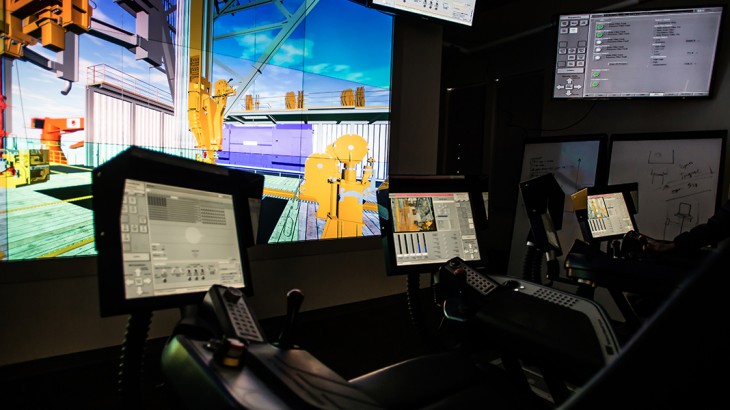Catalin Teodoriu, Associate Professor of Petroleum Engineering, has been appointed as the Director of the Drilling Simulation Center at OU. The National Oilwell Varco (NOV) drilling simulator, donated to OU’s Mewbourne School of Petroleum and Geological Engineering, is an industrial standard simulator used to create unique virtual experiences that allow students to safely apply their academic knowledge to real life scenarios and build further skills that enhance their learning all in the safety of a controlled environment. The simulator is built along NOV’s expertise in generating virtual environments in which to train their drilling operations personnel for procedures on rigs; 3D animation, a cyber chair and unique source code for hydraulics and other drilling processes are part of the simulation. OU’s Drilling Simulation Center (OUDSC) consists of hardware and software units concentrated around the NOV simulator. In his newly appointed position, Teodoriu wishes to expand upon current simulator use by initiating drilling simulation that uses analytical, numerical, experimental and hardware-in-the-loop (HiL) research.
Teodoriu, as director, has also secured a $115,000 gift from ConocoPhillips in order to develop a hybrid stick-slip experimental simulator that can work as an independent unit or linked to the existing drilling simulator at OU. This concept opens a new era of drilling process modeling, controlling and training. The development of a unique, large-scale stick-slip simulator provides the OUDSC with the ability to simulate bit vibrations. Bit-rock interaction will be virtually simulated by computer and then physically transferred to a downscaled drillstring by a high precision, high speed positioning system most commonly used in space technology. The entire unit will receive the main drilling parameters (WOB, RPM and vibrations due to drillstring behavior) as input; rock properties and bit features will generate through their selection (physical elements). System response will be analyzed through the output computer and exchanged with the drillstring simulator, while the main output parameters (ROP and TOB) are relayed to the drilling simulator. The proposed setup exceeds all existing stick-slip experimental designs on the market today by size while, also, adding new features like axial movement (mimicking ROP or heave compensation) and curved sections. This new facility will be the first to integrate HiL capabilities and be connected to a drilling simulator that can support such an option. The overall design accounts not only for torsional vibrations but also allows the string to move axially while RPM, WOB and flow rates are directly linked to the simulator, and, due to the simulator’s advanced layout, resembling drillstrings with a medium to small radius of curvature, the stick-slip process will be captured and highlighted for a wide range of directional well situations.

